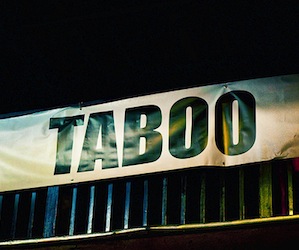Brands
Is Social Media Stripping Away Brand Journalism Taboos?
As social media  has become more pervasive, brands have found themselves in a unique position to truly develop relationships with their customers, both present and potential. One of the best ways to cultivate that relationship is through the use of brand journalism, but the dangers and pitfalls are many.
has become more pervasive, brands have found themselves in a unique position to truly develop relationships with their customers, both present and potential. One of the best ways to cultivate that relationship is through the use of brand journalism, but the dangers and pitfalls are many.
So how does a brand navigate the minefield? I spent this past week at South by Southwest speaking to brands and journalists alike to get their input. What I’ve found is that, overwhelmingly, brand journalism fits into two categories of work, with unique challenges and rewards to each.
The Brand Journalist
Eloqua is a company that focuses on marketing automation for businesses. The company leans on brand journalists to develop shareable, actionable content for interested parties, customers and non-customers alike.
One of Eloqua’s journalists is Corporate Reporter Jesse Noyes. Noyes finds that his personal brand is symbiotic with that of Eloqua; people find his work through the company almost as often as they find the company through his work.
But Noyes has a big claim, and it’s one that I think is important:
“The last bastion of ad-free content is brand journalism,” Noyes says. “We are providing powerful, useful content, and in return we’re going to ask if our company can help yours. I don’t think there’s anything wrong with that. There’s no commitment, and you opt in to reading our work, completely free.”
Noyes tells me that social media plays dual roles in his position with Eloqua. First, it has allowed him to build his own brand, wherein he is seen as a respectable thought leader in the space in which he works. But there’s another piece that’s equally important:
“Social sharing of information is changing. People aren’t looking at the source, they’re simply sharing things that they find to be good.”
So this obviously opens the doors for brands to have content that is driven around their company’s area of operation, but that content has to be policed.
Noyes tells me it’s imperative that there be a third party between the writer and the “boss” in order to make certain the messages from both sides can find a common ground. Without that third party, it’s harder for the boss and the writer to meet their objectives without one side compromising too heavily.
The Agency Journalist
Simon Owens is an old-soul journalist in the body of a young man. He serves as the director of editorial & outreach at design agency JESS3, but also works as a freelance writer who focuses on the challenges of media and journalism.
According to Owens, agencies are pushing brands to become more journalistic themselves, but because of this, they have to be careful to disclose any potential conflicts of interest. As much as social media can help to spread a great message, it can work equally as fast when there’s a conflict that isn’t stated.
“You’ll witness an increasing blurring of the lines between journalism and advertising, to the extent that you’ll see journalists toeing an ethical fine line,” Owens says. “The waters are certainly treacherous, though navigable.”
Owens specifically relates the case of brands using freelance journalists, but I think it’s equally as applicable to those journalists who are employees of the company as well. Social media is enabling journalists and brands to continue to build trust between themselves and customers, and it’s imperative that necessary disclosures be clearly stated.
But what about the personal reputation of the journalist itself ? Does working on behalf of a brand prevent one from being able to write for a “real” media company again one day? In a word, no. As more brands behave like those real publishers, the taint disappears.
They key Noyes says, is to do what forward thinking brands are already doing with their content. “Forget about staying on message,” he says, and be transparent.
It is up to the brand journalists to create the appetite for the content that is to come. They’ll do this by creating relationships via social media or otherwise, then delivering on the promise of quality and transparency.
Social media is helping to strip away brand journalism taboos on two levels: First, it’s allowing journalists to connect with readers in more than one location, and second it’s ensuring that great work gets passed along, no matter where it came from. But that’s just what it’s doing today. The challenge is to skate to where the puck will be as the continued evolution of social opens yet more opportunities for brands and journalists alike.
Image courtesy of Flickr, Code Arachnid
Image by FlickrGet better at your job right now.
Read our monthly newsletter to master content marketing. It’s made for marketers, creators, and everyone in between.




